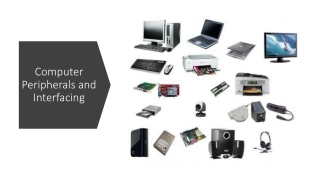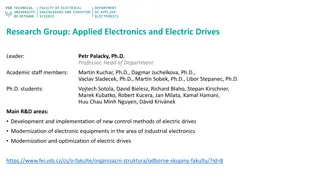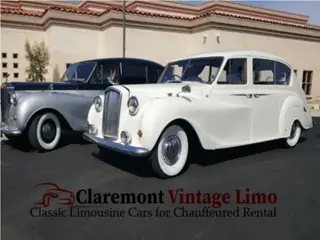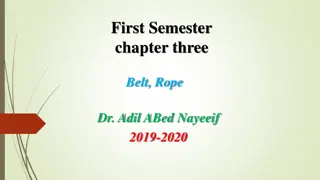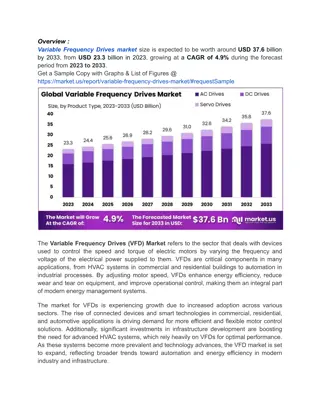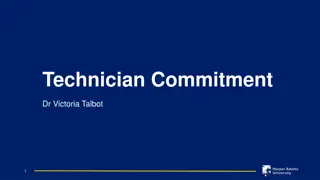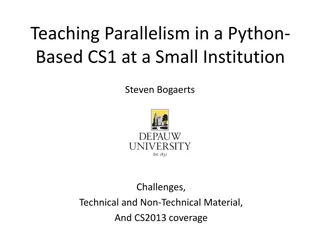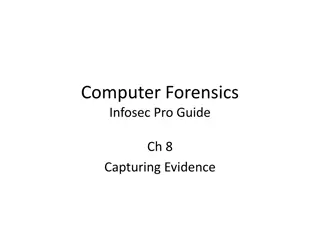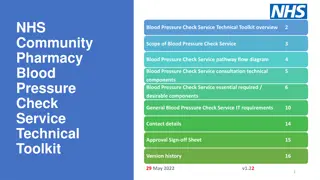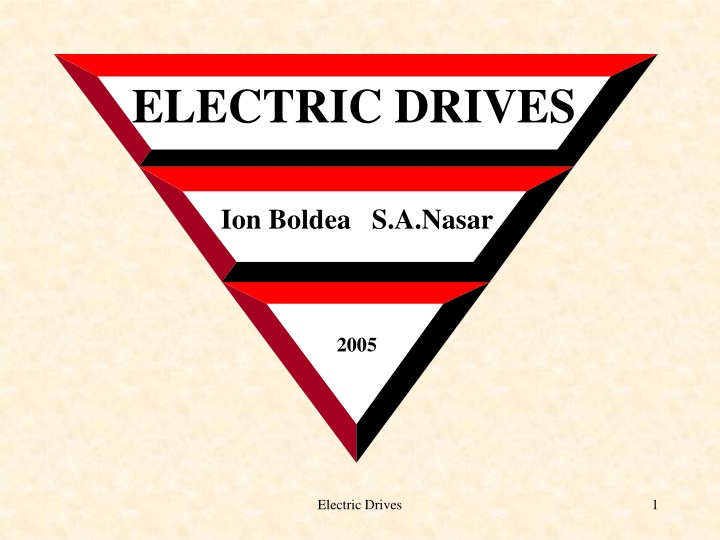
Power Electronic Converters for Electric Drives
Explore the world of electric drives and power electronic converters through detailed illustrations and explanations. Learn about thyristors, GTOs, transistors, IGBTs, rectifiers, and more used in modern drive systems, all explained in a clear and informative manner.
Download Presentation

Please find below an Image/Link to download the presentation.
The content on the website is provided AS IS for your information and personal use only. It may not be sold, licensed, or shared on other websites without obtaining consent from the author. If you encounter any issues during the download, it is possible that the publisher has removed the file from their server.
You are allowed to download the files provided on this website for personal or commercial use, subject to the condition that they are used lawfully. All files are the property of their respective owners.
The content on the website is provided AS IS for your information and personal use only. It may not be sold, licensed, or shared on other websites without obtaining consent from the author.
E N D
Presentation Transcript
ELECTRIC DRIVES Ion Boldea S.A.Nasar 2005 Electric Drives 1
3. POWER ELECTRONIC CONVERTERS (P.E.Cs) FOR DRIVES 3.1. POWER ELECTRONIC SWITCHES (P.E.Ss) a.) b.) Figure 3.1.The diode symbol a.) and its ideal characteristic b.) Electric Drives 2
The thyristor is used especially in P.E.Cs having an interface with a.c. power grids, at high power levels and low commutation frequencies (up to 300Hz in general). a.) b.) Figure 3.3. The thyristor s symbol a.) and its ideal characteristic b.) Electric Drives 3
The GTO (gate turn off thyristor) (figure 3.3) is a fully controllable P.E.S.. Its saturation is obtained as for the thyristor but its blocking is accessible when a negative current iG is applied to the command (driver) circuit. a.) b.) Figure 3.3. The GTO s symbol a.) and its ideal characteristic b.) Electric Drives 4
a.) b.) Figure 3.4. The bipolar junction transistor symbol a.) and its ideal characteristic b.) a.) b.) Figure 3.5. MOS transistor symbol a.) and its ideal characteristic Electric Drives 5
a.) b.) Figure 3.6. IGBT s symbol a.) and its ideal characteristic b.) The P.E.Cs may be classified in many ways. In what follows we will refer to their input and output voltage / current waveforms and distinguish: a.c. - d.c. converters (or rectifiers); d.c. - d.c. converters (or choppers); a.c. - d.c. - a.c. converters (indirect a.c. - a.c. converters) - 2 stages; a.c. - a.c. converters (direct a.c. - a.c. converters). We should notice that a.c. - d.c. - a.c. converters contain an a.c. - d.c. source side converter (rectifier) and a d.c. - a.c. converter called inverter. These converters are mostly used with a.c. motor drives of all power levels. Electric Drives 6
3.2. THE LINE FREQUENCY DIODE RECTIFIER FOR CONSTANT D.C. OUTPUT VOLTAGE Vd Figure 3.7. Diode rectifier with output filter capacitor a. single phase b. three phase Electric Drives 7
Let us consider first a basic rectifier circuit (figure 3.8) with instantaneous commutation and a line source inductance Ls providing constant Vd on no load. Figure 3.8.Basic rectifier equivalent circuit a.) and the voltage and current waveforms b.) The diode starts conducting when at t1. At t2 Vs = Vd but, due to inductance Ls, the current goes on in the diode until it dies out at t3 such that Aon = Aoff. In fact the integral of inductance voltage VL from t1 to t1+T should be zero, that is the average flux in the coil per cycle is zero: T t 0 dt V = = Vs V V s d + 1 A A (3.1) L on off t 1 2 As Vd is close to the maximum value , the current i becomes zero prior to the negative (next) cycle of Vs. Electric Drives 8
Figure 3.8 illustrates only the positive voltage, that is diodes D1 - D2 conducting. For the negative Vs, D3 - D4 are open and a similar current waveform is added (figure 3.9). Figure 3.9. Single phase rectifier - the waveforms As long as the current id is non zero: di L V = = d 2 V sin t V (3.2) L s s d dt ( ) ( d + t T 1 ) = ; t L i 2 V sin t V t (3.3) s d s d on off t 1 = For on: V 2 V sin on (3.4) d s Electric Drives 9
For t = off, id(t) = 0 and from (3.3) we may calculate off as a function of on. Finally the average coil flux linkage LsId is: 1 I L s d s For given values of LsId, iteratively on, off and finally Vd are obtained from (3.3) - (3.5) (figure 3.10). off ( ) ( d ) t (3.5) = L i t d on Figure 3.10. Vd versus LsId Electric Drives 10
3.3. LINE CURRENT HARMONICS WITH DIODE RECTIFIERS The line current has the same shape as id in figure 3.9 but with alternate polarities (figure 3.11). Figure 3.11. Source current shape Also the current fundamental is lagging the source voltage by the displacement power factor (DPF) angle 1: DPF = cos (3.6) 1 Electric Drives 11
The source current r.m.s. value is Is. Thus the apparent power magnitude S is: S = where Vs is the r.m.s. voltage value. The power factor PF = sI (3.7) V s P (3.8) S where (3.9) = P V I DPF s 1 s I So (3.10) = 1 s PF DPF I s A strong distortion in the line current will reduce the ratio Is1 / Is and thus a small power factor PF is obtained even if DPF is unity. 2 2 = + I 1 s I I Now = (3.11) s s 2 The total harmonic current distortion THD (%) is: I = (3.12) dis THD % 100 1 s I Electric Drives 12
= where = (3.13) 2 I I dis s 2 The peak current Ispeak is also important to be defined as a relative value constant called the crest factor (C.F.): I (3.14) speak I I = . F . C s (3.15) or the form factor (F.F.): = s . F . F I d It has been shown that the displacement power factor DPF is above 0.9 but the power factor PF is poor if the source inductance Ls is small. Example 3.1. A single phase diode rectifier with constant e.m.f. is fed from an a.c. source with the voltage (Vs = 120V, = 367rad/s). The discontinuous source current (figure 3.11) initiates at on = 600 and becomes zero at off = 1500. The source inductance Ls = 5mH. Calculate the d.c. side voltage Vd and the waveform of the source current id( t). ( ) t = V V 2 sin t s s Electric Drives 13
According to figure 3.9 from (3.3) we obtain: ( ) ( d off V ) = 2 V sin t V t 0 (3.16) s d on ( ) ( ) (3.17) = 0 2 cos cos V s on ( 5 off d off on ) 2 120 cos 60 cos 150 = = Vd 147 V From (3.17): (3.18) 1 6 3 Now from (3.3) again: = i ; 0 0 d on ( ) ( d t 1 ( ) ) (3.19) = ; t i t 2 V sin t V for d s d on off L s on = 0 i ; 0 180 d off Electric Drives 14
Consequently: ( ) ( ) 2 V cos cos t V t ( ) = s on d on i t d L s ( 5 . 0 ) ( ) 2 120 cos t 147 367 t / 3 (3.20) = 3 367 5 10 0 0 for 6 0 150 Though not convenient to use, (3.19) - (3.20) allow for the computation of Is (rms), peak current Ispeak, fundamental I1, TDH% (3.12), crest factor (3.14), average d.c. output current Id. Electric Drives 15
3.4. CURRENT COMMUTATION WITH Id = ct AND LS 0 For the constant d.c. current Id = ct (figure 3.12), a.) Figure 3.12. Current commutation in single sided rectifier with Id = ct. a.) equivalent circuit; b.) source current; c.) rectified voltage Electric Drives 16
Ideally (Ls = 0), the source current will change stepwise from -Id to Id at t = 0 and t = (figure 3.12.b). Due to the nonzero Ls, during commutation, all four diodes conduct and thus Vd = 0. For t < 0 D3D4 conduct while after commutation ( t > u) only D1D2 are on. As Vd = 0, the source voltage during commutation is dropped solely across inductance Ls: t sin 2 V s = di s L (3.21) ( ) t s d Through integration for the commutation interval (0,u): u t sin 2 V I d ( ) = = d t L di 2 L I (3.22) s s s s d 0 I d 2 L (3.23) = sI 2 cos u 1 We find: d V s Now the average d.c. voltage Vd is: 2 L (3.24) = s V V I d d 0 d Electric Drives 17
2 2 2 ( ) = = = V V 2 sin t d t V 9 . 0 V where (3.25) d 0 s s s 2 0 is the ideal (Ls = 0) average d.c. voltage (figure 3.12c). So the source inductance Ls produces a reduction in the d.c. output voltage for constant d.c. output current. The current commutation is not instantaneous and during the overlapping period angle u all four diodes are conducting. Electric Drives 18
3.5. THREE PHASE DIODE RECTIFIERS In industrial applications three phase a.c. sources are available, so three phase rectifiers seem the obvious choice (figure 3.13). Figure 3.13. Three phase diode rectifier Electric Drives 19
The load resistance RL with a filtering capacitor Cd may be replaced by a constant d.c. current source Id. Using the same rationale as in the previous paragraph we obtain: 3 L = s V V I (3.26) d d 0 d 2 L = s 2 cos u 1 I d V LL 3 2 = with where VLL is the line voltage (rms). LL 0 d V V Electric Drives 20
The corresponding waveforms for Ls = 0 are shown in figure 3.14 and for Ls 0 in figure 3.15. Figure 3.14. Three phase ideal waveforms for Ls = 0 Electric Drives 21
For nonzero Ls a reduction of output d.c. voltage (3.26) is accompanied by all three phases conducting during the commutation angle u (figure 3.15). Figure 3.15. Three phase current commutation with Ls 0 Electric Drives 22
On the other hand, for constant d.c. voltage (infinite capacitance Cd), as for the single phase rectifier, the source current waveform is as in figure 3.16. Figure 3.16. Three phase rectifier with finite Ls and infinite Cd (Vd = ct.) - the source current and voltage Electric Drives 23
Example 3.3. Commutation overlapping angle u. For a single phase or three phase a.c. system (star connection) with phase voltage , calculate the commutation angles u, ideal no load voltage and load voltage of single or three phase diode rectifier delivering a constant d.c. current Id = 10A for the source inductance Ls = 5mH. Solution: For the single - phase diode rectifier, using (3.23): ( ) t = Vs 120 2 sin 367 t 3 2 L 2 367 5 10 = = = s cos u 1 I 1 10 . 0 783 (3.28) d V 2 120 2 s u = 22.7270 The ideal no load voltage Vd0 (3.25) is: 2 2 2 2 (3.29) = = = V V 120 108 V d 0 s 3 2 L 2 367 5 10 (3.30) = = = s V V I 108 10 96 312 . V d d 0 d Electric Drives 24
For the three phase diode rectifier (3.27) u is: 3 2 367 5 10 (3.31) = = cos u 1 10 8746 . 0 120 u = 12.220 2 3 Vd0 and Vd (from 3.26) are: 3 2 3 2 (3.32) = = = V V 120 3 279 66 . V d 0 LL 3 3 L 3 367 5 10 = = = (3.33) s V V I 279 66 . 10 262 128 . V d d 0 d Thus the filtering capacitor Cd is notably smaller in three phase than in single phase diode rectifiers. Electric Drives 25
3.6. PHASE - CONTROLLED RECTIFIERS (A.C. - D.C. CONVERTERS) Table 3.1. Phase controlled rectifier circuits Circuit type Power range Ripple frequency Quadrant operation half wave single phase below 0.5KW fs i1 ia + La eg ~V1 - one quadrant A half wave three phase up to 50KW 3fs B C two quadrant Electric Drives 26
semi - converter single phase semi - converter three phase up to 75KW 2fs ~ one quadrant up to 100K W 3fs A B C D? one quadrant Full converter single phase up to 75KW 2fs ~ two quadrant Electric Drives 27
full converter three phase up to 150K W 6fs A B C two quadrant ~Dual converter single phase up to 15KW 2fs ~ four quadrant CDual converter three phase up to 1500K W 6fs A B A B C four quadrant Electric Drives 28
3.7. D.C. - D.C. CONVERTERS (CHOPPERS) Table 3.2. Single phase chopper configurations for d.c. brush motors Type Chopper configuration ea - Ia Function characteristics S1 First quadrant (step down) choppers Va = V0 for S1 on Va = 0 for S1 off and D1 on La io Ra + + ia D1 Va Vo e g - - D2 La Second quadrant, regeneration (step - up) chopper Va = 0 for S2 on Va = V0 for S2 off and D2 on io Ra + + ia Vo Va S2 e g - - Electric Drives 29
Two quadrant chopper ea = V0 for S1 or D2 on ea = 0 for S2 or D1 on ia>0 for S1 or D1 on ia<0 for S2 or D2 on i e R L D S g + - V D S S g + - V D S S g + - V D D S S S D operated Va<0 ia - reversible a a 1 2 o 2 1 a Two quadrant chopper Va = +V0 for S1&S2 on Va = -V0 for S1&S2 off 2 a a 1 2 o 1 e R L D and D1&D2 on Four quadrant chopper S4 on &S3 off S1&S2 operated Va>0 ia - reversible S2 on &S1 off S3&S4 a a 2 1 o 1 3 4 2 3 e R L D 4 Electric Drives 30
Static switch for braking Braking resistor Diode 3~ Rectifier Capacitor filter Multiphase two quadrant chopper Bidirectional power flow Figure 3.17. Multiphase d.c. - d.c. converters for switched reluctance motors If an a.c. source is available a diode rectifier and filter are used in front of all choppers (figure 3.17). Electric Drives 31
3.8. D.C. - A.C. CONVERTERS (INVERTERS) + Vo - Unidirectional bidirectional power flow power flow braking resistor a.c.motor Figure 3.18. Voltage source PWM inverter a. basic configuration b. output waveforms Electric Drives 32
Bidirectional power flow bidirectional power flow + Io Phase 3~ controlled rectifier - Figure 3.19. Current source inverter a. basic configuration b. ideal output waveforms a.c. motor a.) b.) Electric Drives 33
PWM Voltage source inverter 3~ bidirectional power flow a.c. motor Figure 3.20. Bi-directional power flow (dual) a.c. - d.c. converter with unity power factor and sinusoidal inputs - d.c. voltage link Electric Drives 34
motoring 3~ a.c. motor generating Figure 3.21. A.c. - d.c. - a.c. converter with bi-directional power flow and unity input power factor - d.c. current link Electric Drives 35
3.9. DIRECT A.C. - A.C. CONVERTERS 3 secondary three phase transformer DCR for DCR for phase c phase b dual controlled a b rectifier (DCR) for phase a c a.c. motor Figure 3.22. Six - pulse cycloconvertor for a.c. motor drives Electric Drives 36

